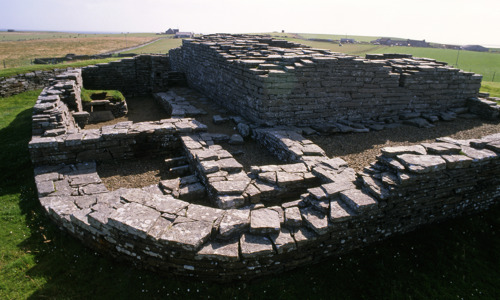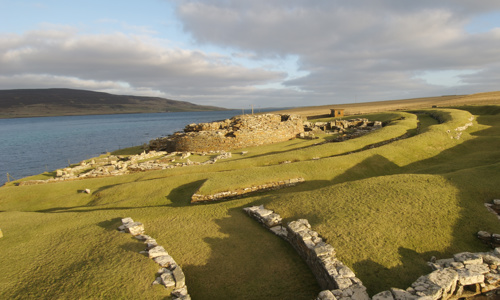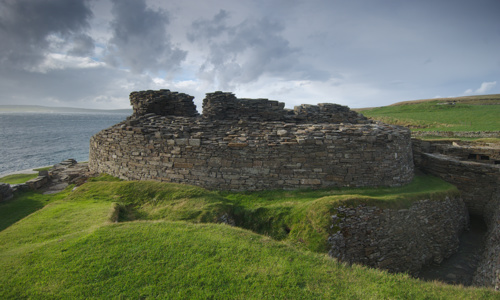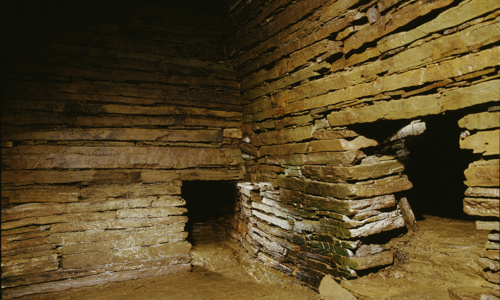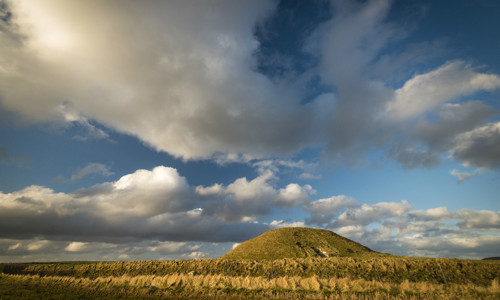History
Taversöe Tuick is a Neolithic chambered cairn, which was constructed about 5,000 years ago. Used for burial over a long period of time, this monument was probably an important focus of ritual for the prehistoric inhabitants of Rousay.
Unusual construction
Taversöe Tuick cairn has two separate chambers, one set above another – an unusual arrangement seen at only one other Orkney cairn, at Huntersquoy on Eday. There’s also a unique third small chamber just outside the entrance to the lower chamber.
The two main cairn tombs were planned this way – the top tomb is no afterthought. The two chambers were accessed and used separately.
Inside the cairn
The lower chamber was entered from the south. It is divided into four compartments, all fitted with stone shelves. A crouched skeleton was found on one of the shelves, along with bones from at least two others elsewhere in the cairn. Additionally, three heaps of cremated bone lay in the entrance passage.
The upper chamber was entered from the north. In here, excavators found cremated bones of at least one adult and child.
The outer chamber is divided by four upright slabs and is connected to Taversöe Tuick by a small stone channel. No human remains were found here, but three well-preserved pottery vessels were uncovered. Could this have been for offerings, or perhaps for the living to communicate with the dead?



